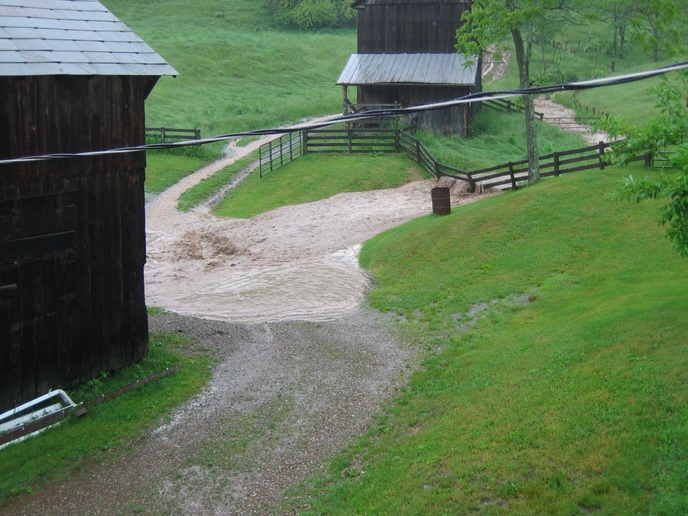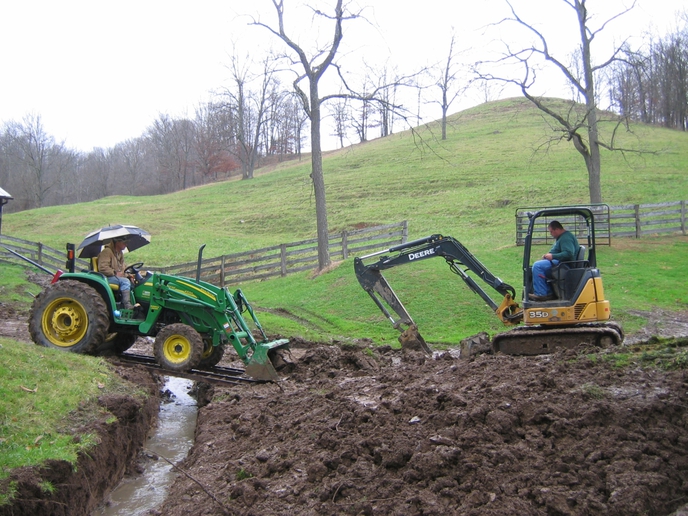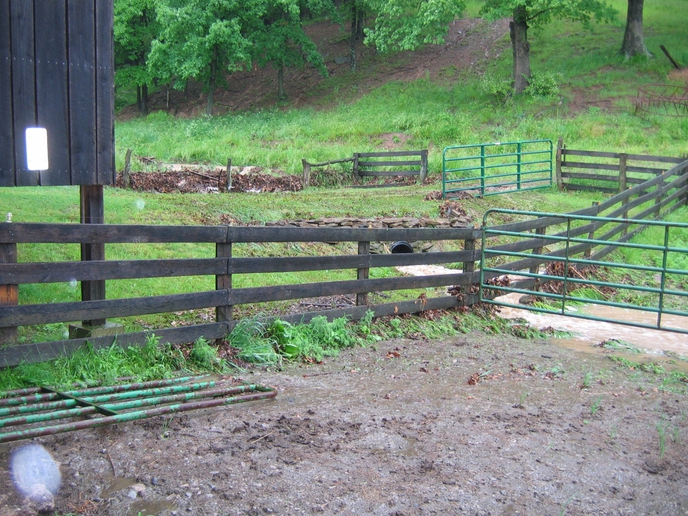Three pictures, one to show what happens when it floods and the other two shows how we have it dug out now and ready to place a 24" double wall plastic culvert in the trench. We will pack it in with limestone and either pour concrete walls on each end or lay up sandstone, bricks, and what ever other rocks I have on hand.
The question is, how much top fill will we need and will it hold up when it floods and goes over the top? Plan to finish off the top surface with #4 limestone.
In the past it has never washed out the road because it was packed limestone with some concrete and other rocks in the top foot of the stream bed.
Previous culvert was only a 6" plastic layed near the top with some concrete over it, always plugged or colapsed.



The question is, how much top fill will we need and will it hold up when it floods and goes over the top? Plan to finish off the top surface with #4 limestone.
In the past it has never washed out the road because it was packed limestone with some concrete and other rocks in the top foot of the stream bed.
Previous culvert was only a 6" plastic layed near the top with some concrete over it, always plugged or colapsed.





